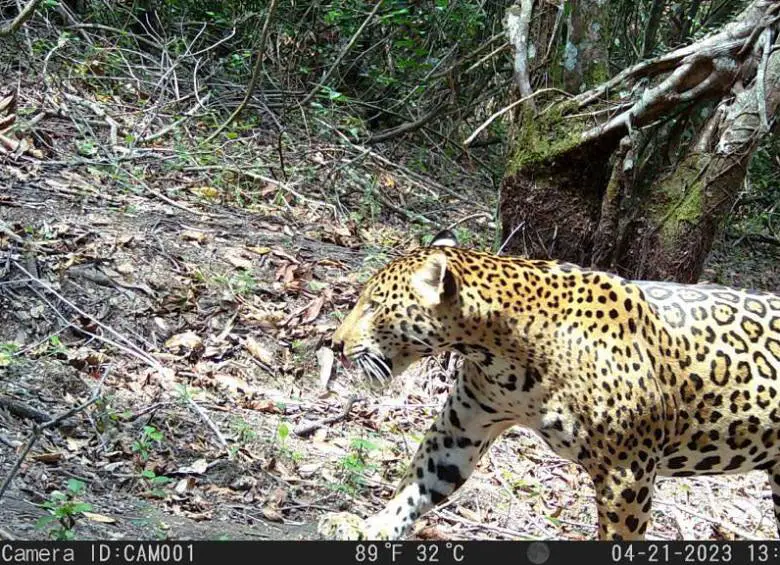Using camera traps installed in the Palmarito reserve, it was possible to photograph a jaguar that had not been seen in 17 years.
In camera traps placed near the Cravo Sur river basin in Orocué, Casanare, the jaguar Panthera onca, one of the outstanding species of Colombian fauna, has been captured.
It had been at least 17 years since Colombia had seen the species that suddenly appeared. In Orocué, which is located in the Orinoqua region, in the eastern part of the country, the Palmarito reserve borders the Cravo Sur river.
Habitat loss, expansion of monocultures, hunting, and lack of prey have posed threats to the survival of cats in the area. According to local media, the Orinoquía has six months of summer and six months of winter. When it rains, estuaries form, turning into large swamps that last most of the winter. This is known as imperfect drainage and is a natural component of the floodplain ecosystem.
It may interest you: Colombians already prepare a budget for Mother’s Day
Hunting for this jaguar Panthera onca began in 2007, but it wasn’t until February of this year, when Australian researchers set up a camera trap in the Palmarito reserve as part of a palm bear research expedition, that an image of the jaguar was captured. .
Three months later, when the Palmerito Foundation examined the photographic archives of the camera, they discovered the image dated February 7, 2023. The Palmerito Foundation will now install more camera traps in the area to obtain clearer images of this feline or determine if there are more jaguars in the Cravo Sur river basin.
According to local media, the Orinoqua has six months of summer and six months of winter. When it rains, estuaries form, turning into large swamps that last most of the winter. This is known as imperfect drainage and is a natural component of the floodplain ecosystem.
Although the area is still known for its abundance of natural resources, it is also home to four different species of cats, including the puma, ocelot, jaguarundi, and jaguar.
